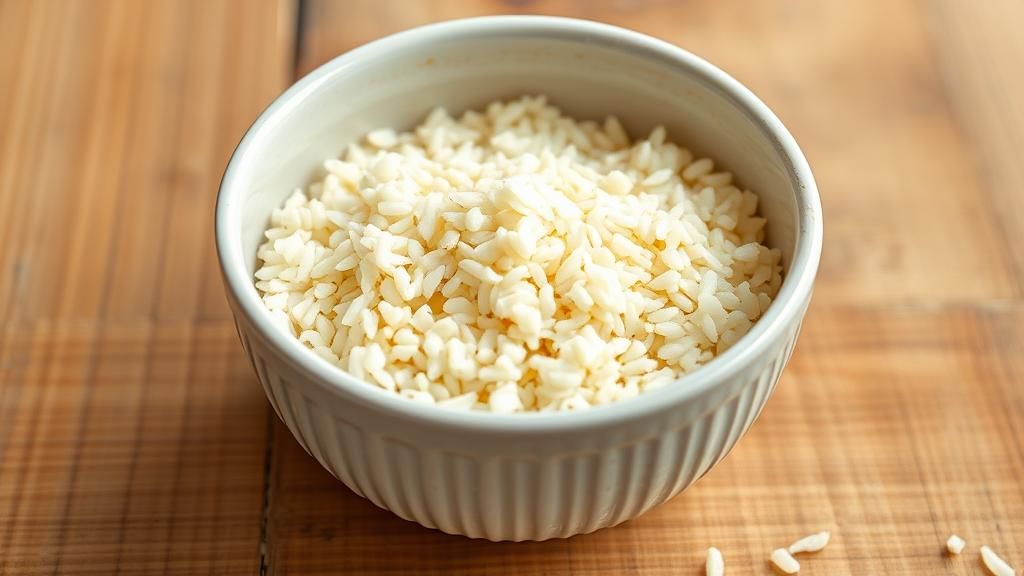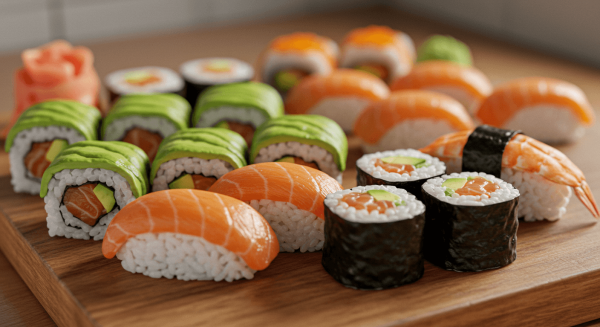Choosing the right rice cooker

The rice cooker is a kitchen appliance that has become essential for many households, especially those who regularly consume rice. This seemingly simple appliance hides sophisticated technology designed to cook rice to perfection, every time. No more boiling over, sticky, or undercooked rice! The rice cooker guarantees even cooking and an ideal texture, while freeing up time to prepare other dishes. But with the multitude of models available on the market, how can you be sure you're making the right choice? This article will guide you through the different types of rice cookers, their features, essential selection criteria, and give you tips for using and maintaining your appliance properly.
1. Understand the different types of rice cookers
The rice cooker market offers a wide variety of models, each with its own unique features and benefits. Understanding these differences is crucial to choosing the appliance that best suits your needs and budget.
Basic rice cookers
Basic rice cookers are the simplest and most affordable models. They generally operate with a single on/off button. Cooking is based on temperature. Once the water is completely absorbed by the rice and the temperature rises, the cooker automatically switches to keep warm mode. These models are ideal for those looking for an easy-to-use and inexpensive appliance.
Rice cookers with advanced functions
These rice cookers offer additional features that allow for more precise and versatile cooking. They may include:
- Programmable timer: to program the start of cooking and have fresh rice ready at the desired time.
- Different cooking programs: suitable for different types of rice (white, brown, sushi, etc.) and other grains such as quinoa or barley.
- Extended warming: to keep the rice at the ideal temperature for several hours.
- Steam cooking: Some models are equipped with a steamer basket to cook vegetables, fish or meat at the same time as the rice.
Induction Rice Cookers (IH)
Induction rice cookers (IH) use induction technology to heat the cooking surface more evenly and quickly. This technology allows for more precise temperature control and more even cooking of the rice, resulting in a better texture and a more flavorful taste. IH rice cookers are generally more expensive than traditional models, but they offer superior cooking quality.
Rice cookers with microcomputer (Fuzzy Logic)
Microcomputer rice cookers, also called “Fuzzy Logic,” are the most sophisticated models. They use a microprocessor to automatically adjust the temperature and cooking time based on the type of rice, the amount of water, and other factors. This technology allows for optimal cooking of rice, regardless of the type or quantity. They are generally more expensive but offer the best cooking quality and great versatility.
2. The essential criteria for choosing the right rice cooker
To make the right choice, it is important to take into account several key criteria that correspond to your needs and your consumption habits.
Ability
Rice cooker capacity is one of the most important criteria to consider. It is generally expressed in the number of cups of uncooked rice. It is essential to choose a capacity that is appropriate for the size of your household and the amount of rice you typically consume. Here are some guidelines:
- 1 to 3 cups: ideal for a single person or a couple.
- 5 to 6 cups: suitable for a family of 3 to 4 people.
- 10 cups and more: perfect for large families or for entertaining guests.
It is best to choose a rice cooker with a capacity slightly larger than your usual needs, as it is easier to cook small quantities in a large cooker than the other way around.
Features
The features offered by the rice cooker can greatly influence your user experience. Here are some features to consider:
- Cooking programs: If you consume different types of rice (white, brown, sushi, etc.), it is important to choose a rice cooker with suitable cooking programs.
- Programmable timer: This feature is very practical for programming the start of cooking and having fresh rice ready at the desired time.
- Keep warm: The keep warm function is essential for keeping rice at the ideal temperature for several hours without it drying out or burning.
- Steam cooking: If you want to cook vegetables, fish or meat at the same time as the rice, choose a model with a steamer basket.
Materials and quality of the tank
The quality of the pot is a key factor in the durability and performance of the rice cooker. Pots are typically made of aluminum, stainless steel, or ceramic. Here are the pros and cons of each material:
- Aluminum: lightweight and economical, but can warp easily and may not be as durable as other materials.
- Stainless steel: durable and easy to clean, but can be more expensive and heat less evenly than aluminum.
- Ceramics: provides excellent heat distribution and is non-stick, but can be more fragile and more expensive.
It's important to choose a bowl with a quality non-stick coating to prevent the rice from sticking and make cleaning easier. Also, make sure the bowl is removable and dishwasher-safe for easy maintenance.
Ease of use and maintenance
A rice cooker that's easy to use and maintain will save you time and energy. Look for models with:
- An intuitive control panel: with clear buttons and easy-to-understand instructions.
- A removable cover: for easy cleaning.
- Dishwasher-safe accessories: such as the bowl, the steamer basket and the spatula.
Budget
Rice cooker prices vary considerably depending on the brand, capacity, features, and material quality. It's important to set a budget before you begin your search and compare different models in your price range. Remember that price isn't always an indicator of quality. It's possible to find excellent rice cookers at affordable prices.
3. Tips for using and maintaining your rice cooker
To get the most out of your rice cooker and extend its lifespan, it is important to follow a few simple tips for use and maintenance.
Water dosage
Water measurement is crucial for perfectly cooked rice. Refer to the manufacturer's instructions for the recommended water-to-rice ratio for each type of rice. Typically, the ratio is 1:1 for white rice and 1:1.5 or 1:2 for brown rice. Feel free to adjust the proportions according to your personal preferences.
Preparing the rice
Before cooking rice, it is recommended to rinse it in cold water to remove excess starch. This results in lighter, less sticky rice. You can rinse the rice several times until the water runs clear.
cooking rice
Follow the manufacturer's instructions to start cooking the rice. Make sure to close the rice cooker lid tightly and do not open it during cooking unless otherwise directed. Once cooking is complete, let the rice rest for a few minutes before serving.
Cleaning the rice cooker
Clean your rice cooker after each use to prevent residue and bacteria buildup. Remove the bowl and wash it with warm, soapy water. You can also use a soft sponge or cloth to clean the inside of the rice cooker. Be sure to dry all parts thoroughly before reassembling.
Maintaining the non-stick coating
To prolong the life of the bowl's non-stick coating, use only wooden or plastic utensils to stir the rice. Avoid using metal utensils, which could scratch the coating. Do not clean the bowl with abrasive products or metal scourers.
A rice cooker is a worthwhile investment for anyone who appreciates perfectly cooked rice. By understanding the different types of rice cookers, considering the essential selection criteria, and following our use and care tips, you're sure to make the right choice and enjoy your appliance for many years to come. So, are you ready to enjoy delicious, perfectly cooked rice every time?



